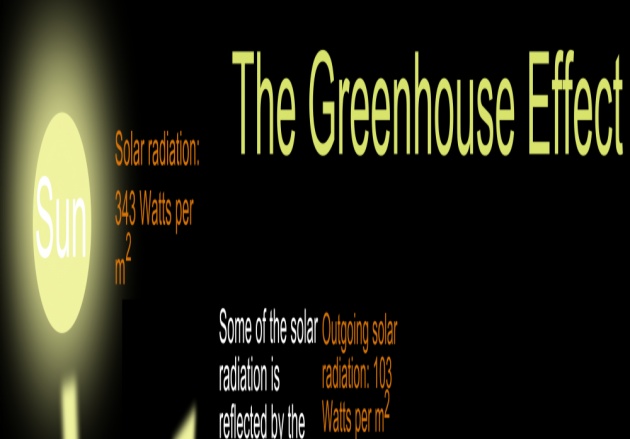Introduction
The Goldilocks Principle can be summed up neatly as "Venus is too hot, Mars is too cold, and Earth is just right." The fact that Earth has an average surface temperature comfortably between the boiling point and freezing point of water, and thus is suitable for our sort of life, cannot be explained by simply suggesting that our planet orbits at just the right distance from the sun to absorb just the right amount of solar radiation. Our moderate temperatures are also the result of having just the right kind of atmosphere. A Venus-type atmosphere would produce hellish, Venus-like conditions on our planet; a Mars atmosphere would leave us shivering in a Martian-type deep freeze.
Instead, parts of our atmosphere act as an insulating blanket of just the right thickness, trapping sufficient solar energy to keep the global average temperature in a pleasant range. The Martian blanket is too thin, and the Venusian blanket is way too thick! The 'blanket' here is a collection of atmospheric gases called 'greenhouse gases' based on the idea that the gases also 'trap' heat like the glass walls of a greenhouse do.
These gases, mainly water vapor (![]() ), carbon dioxide (
), carbon dioxide (![]() ), methane (
), methane (![]() ), and nitrous oxide (
), and nitrous oxide (![]() ), all act as effective global insulators. To understand why, it's important to understand a few basic facts about solar radiation and the structure of atmospheric gases.
), all act as effective global insulators. To understand why, it's important to understand a few basic facts about solar radiation and the structure of atmospheric gases.
Solar Radiation
The sun radiates vast quantities of energy into space, across a wide spectrum of wavelengths.
Most of the radiant energy from the sun is concentrated in the visible and near-visible parts of the spectrum. The narrow band of visible light, between 400 and 700 nm, represents 43% of the total radiant energy emitted. Wavelengths shorter than the visible account for 7 to 8% of the total, but are extremely important because of their high energy per photon. The shorter the wavelength of light, the more energy it contains. Thus, ultraviolet light is very energetic (capable of breaking apart stable biological molecules and causing sunburn and skin cancers). The remaining 49 - 50% of the radiant energy is spread over the wavelengths longer than those of visible light. These lie in the near infrared range from 700 to 1000 nm; the thermal infrared, between 5 and 20 microns; and the far infrared regions. Various components of earth's atmosphere absorb ultraviolet and infrared solar radiation before it penetrates to the surface, but the atmosphere is quite transparent to visible light.
Absorbed by land, oceans, and vegetation at the surface, the visible light is transformed into heat and re-radiates in the form of invisible infrared radiation. If that was all there was to the story, then during the day earth would heat up, but at night, all the accumulated energy would radiate back into space and the planet's surface temperature would fall far below zero very rapidly. The reason this doesn't happen is that earth's atmosphere contains molecules that absorb the heat and re-radiate the heat in all directions. This reduces the heat radiated out to space. Called 'greenhouse gases' because they serve to hold heat in like the glass walls of a greenhouse, these molecules are responsible for the fact that the earth enjoys temperatures suitable for our active and complex biosphere.
Greenhouse Gases
Carbon dioxide (![]() ) is one of the greenhouse gases. It consists of one carbon atom with an oxygen atom bonded to each side. When its atoms are bonded tightly together, the carbon dioxide molecule can absorb infrared radiation and the molecule starts to vibrate. Eventually, the vibrating molecule will emit the radiation again, and it will likely be absorbed by yet another greenhouse gas molecule. This absorption-emission-absorption cycle serves to keep the heat near the surface, effectively insulating the surface from the cold of space.
) is one of the greenhouse gases. It consists of one carbon atom with an oxygen atom bonded to each side. When its atoms are bonded tightly together, the carbon dioxide molecule can absorb infrared radiation and the molecule starts to vibrate. Eventually, the vibrating molecule will emit the radiation again, and it will likely be absorbed by yet another greenhouse gas molecule. This absorption-emission-absorption cycle serves to keep the heat near the surface, effectively insulating the surface from the cold of space.




